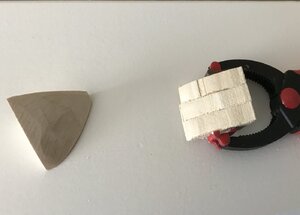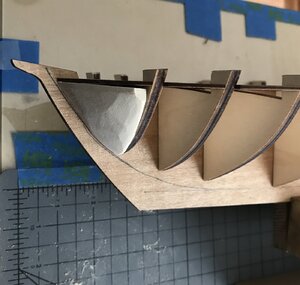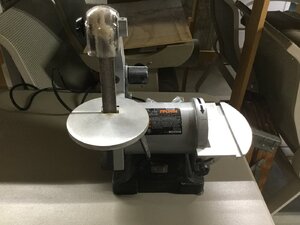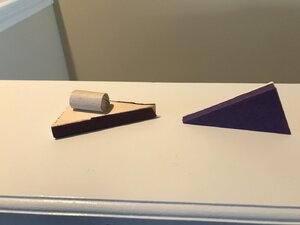Kurt Konrath
Kurt Konrath
Well could that be considered a "Head Scratch Builder?"
 |
As a way to introduce our brass coins to the community, we will raffle off a free coin during the month of August. Follow link ABOVE for instructions for entering. |
 |
Looks very square.Todays Hours in the boatyard.
View attachment 149442
The hatch was on the agenda for today. I decided to work from plan 2 and scaled of the exterior box parts. The mitre corners were going to be a problem. I made several attempts and errors with the smaller hatch so I searched for a DIY method for cutting those corners with this hatch.
View attachment 149446
I need some way to hold this tool and settled on one of my keel holders.
View attachment 149447View attachment 149448View attachment 149449
Next was some method hold the part to be cut. The big clips are holding a piece of scrap in the mitre box channel, the smaller clips are holding the 2 X 8 mm piece to be mitered. I didn't trust my skills and measured and cut each piece of Walnut individually. Each piece was marked "top, bottom side A or side B".
View attachment 149459View attachment 149460
What would I do without Legos. they worked very well to hold the parts square while the glue dried.
View attachment 149464
I'm very pleased with my result. When I noticed the difference between plan 2 and plan 3, I wondered if I could get this part of the build right.
Jan
I have to say that transparency looks pretty cool.
It will be interesting to see how much use you get out of it.
In my post #67, I mention that the process was to use a inkjet printer and transparencies.What product and process did you use to get the transparency overlay, might be something to add in the technique section of forums for others to know about and use.



Take your time with the shaping of those filler blocks and make sure that they are perfect before you start planking.

On that one, I wouldn't carve any further. Just sanding now with varying grits of sandpaper. I am very weary of carving there as it tends to result an irregular shape. I know it takes much longer, but sanding is much safer and the more you sand the more you tend to get a "feel" for the curvature of the bow and the fairing of the bulkheads.

What is the purpose of the line below the bulk heads? Rabbet line ?Bow insert Filler:
View attachment 150592
The raw material, right side of picture, Basswood pieces glued into rough shape. The left side of picture is the Port side almost done.
View attachment 150596
Some more sanding, fitting, sanding, fitting and sanding. Once this part is done I plan to do the same type of fill between bulkheads 2,3 and 4. Then it’s on to Starboard side.
Jan
What is the purpose of the line below the bulk heads? Rabbet line ?

